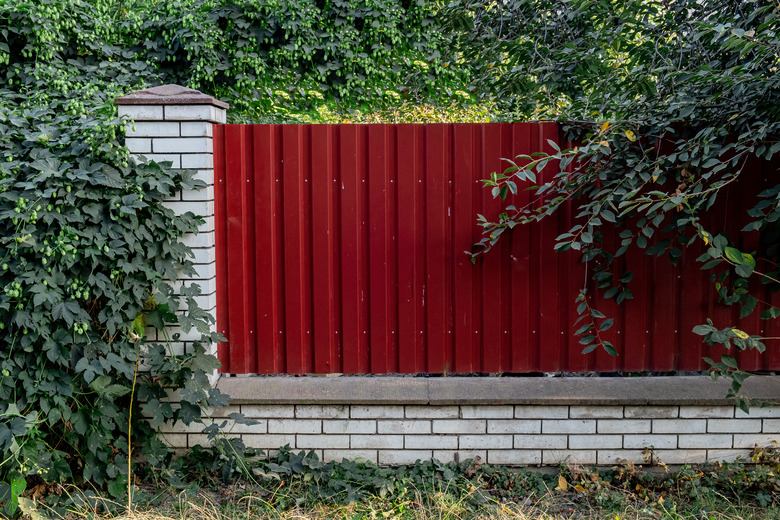How To Paint Corrugated Metal
We may receive a commission on purchases made from links.
Corrugated metal is surprisingly easy to paint, and doing so can sometimes extend the life of the surface. But this type of surface needs preparation depending on whether it's made from galvanized steel or aluminum. The zinc coating on galvanized steel that helps protect the metal from corrosion can also cause the surface to reject paint, making it flake off easily, which is why the metal needs a vinegar treatment before being painted. Similarly, aluminum should be treated with a degreaser to improve paint adhesion. With corrugated aluminum, it is also best to wait six months after installation before painting to allow the surface to become fully weatherized. Here's how to paint corrugated metal.
1. Clean the Metal
1. Clean the Metal
Before painting, you must remove dirt, dust, or loose paint. Failing to do so will prevent the paint from properly adhering to the surface, causing it to flake or peel prematurely. Luckily, cleaning corrugated metal is easy and quick. Simply spray the entire surface with a pressure washer on a high PSI setting.
2. Prep the Metal
2. Prep the Metal
Galvanized steel needs an application of white vinegar prior to painting, as the acidity of the vinegar reacts with the coating, removing the zinc layer to improve paint adhesion. Simply pour the vinegar on the rag and wipe down the surface of the steel. Rinse well and allow it to dry thoroughly for at least one hour.
To prepare aluminum for painting, clean the surface with a commercial degreaser. Add a few squirts of degreaser into a 5-gallon bucket to create a cleaning solution and wipe down the aluminum surface with a clean rag. Rinse the metal well with water. Allow the surface to air dry for at least an hour.
3. Apply a Primer
3. Apply a Primer
Because corrugated metal has so many awkward angles, gaps, nooks, and crannies, an airless sprayer is the best way to apply paint and primer without missing any spots. Use a sprayer to apply a water-based primer designed for use on metal along the entire surface.
While some oil-based primers are compatible with metal, water-based formulas are best because they will typically need to be diluted before they can be used in sprayers. Water-based products are easier to work with, as they can be diluted with only water rather than turpentine or paint thinner like oil-based primers and paints.
4. Paint the Surface
4. Paint the Surface
Clean your sprayer and fill it with latex paint compatible with metal. Dilute the paint as necessary to get an even spray. Apply it evenly across the entire surface and then allow it to dry.
